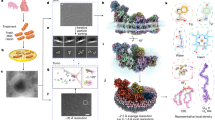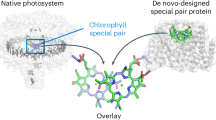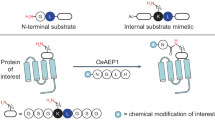Abstract
THE distribution of carbon-14 in the glucose moiety of sucrose, glucose phosphate and starch formed from carbon-14 dioxide during short-time photosynthesis in Chlorella and the leaves of higher plants has been shown to be asymmetric1. It was proposed that either glucose was not formed by the condensation of two triose phosphates of similar tracer distribution or that a pool of unlabelled dihydroxyacetone phosphate was present in the cell, causing a dilution of the upper three carbon atoms of the hexose. To test the validity of the latter suggestion, the intact spinach chloroplast free of much cytoplasic material was employed.
This is a preview of subscription content, access via your institution
Access options
Subscribe to this journal
Receive 51 print issues and online access
$199.00 per year
only $3.90 per issue
Buy this article
- Purchase on Springer Link
- Instant access to full article PDF
Prices may be subject to local taxes which are calculated during checkout
Similar content being viewed by others
References
Gibbs, M., and Kandler, O., Proc. U.S. Nat. Acad. Sci., 43, 446 (1957).
Allen, M. B., Arnon, D. I., Capindale, J. B., Whatley, F. R., and Durham, L. J., J. Amer. Chem. Soc., 77, 4149 (1955).
Gunsalus, I. C., and Gibbs, M., J. Biol. Chem., 194, 871 (1952).
Author information
Authors and Affiliations
Rights and permissions
About this article
Cite this article
GIBBS, M., CYNKIN, M. Conversion of Carbon-14 Dioxide to Starch Glucose during Photosynthesis by Spinach Chloroplasts. Nature 182, 1241–1242 (1958). https://doi.org/10.1038/1821241b0
Issue Date:
DOI: https://doi.org/10.1038/1821241b0
Comments
By submitting a comment you agree to abide by our Terms and Community Guidelines. If you find something abusive or that does not comply with our terms or guidelines please flag it as inappropriate.



